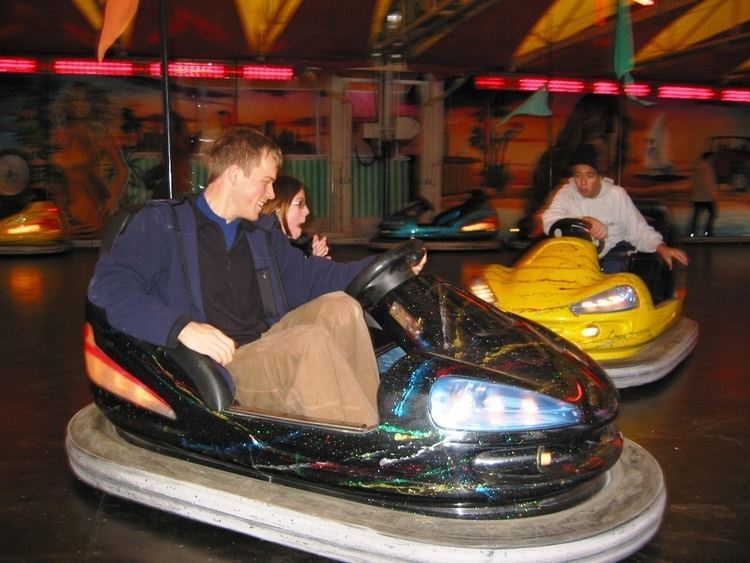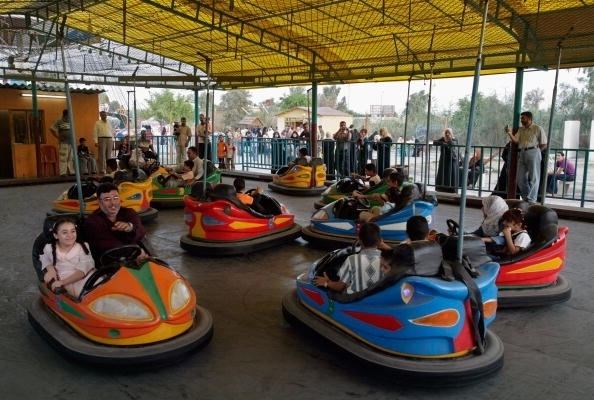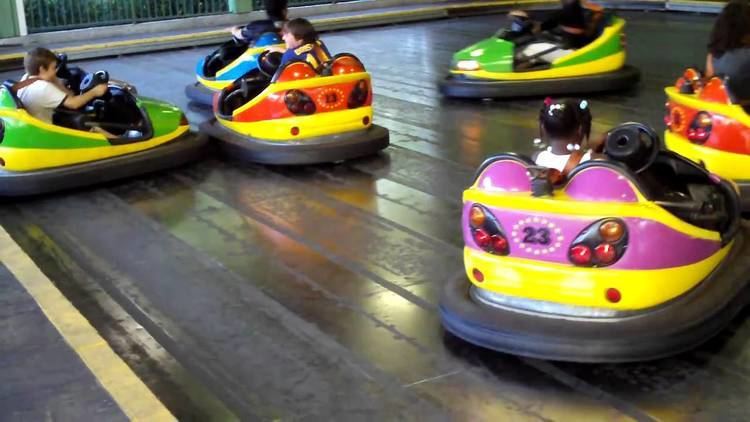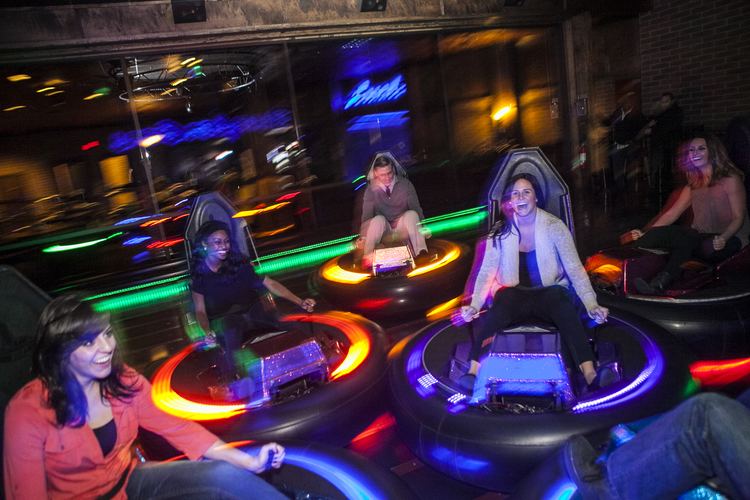Vehicle type Electric powered cars | Riders per vehicle 1-2 | |
 | ||
Bumper cars carnival rides
Bumper cars (in the US) or dodgems (in other English-speaking countries) is the generic name for a type of flat ride consisting of several small electrically powered cars which draw power from the floor and/or ceiling, and which are turned on and off remotely by an operator. They are also known as bumping cars and dashing cars.
Contents

The inventor was Victor Levand, who worked for G.E.
Six flags bumper cars
Design
Power is commonly supplied by one of two methods:


The metal floor is usually set up as a rectangular or oval track, and graphite is sprinkled on the floor to decrease friction. A rubber bumper surrounds each vehicle, and drivers ram each other as they travel. The controls are usually an accelerator and a steering wheel. The cars can be made to go backwards by turning the steering wheel far enough in either direction, necessary in the frequent pile-ups that occur.

Although the idea of the ride is to bump other cars, safety-conscious (or at least litigation-conscious) owners sometimes put up signs reading "This way around" and "No (head on) bumping." Depending on the level of enforcement by operators, these rules are often ignored by bumper car riders, especially younger children and teenagers.
During their heyday, from the late 1920s to 1950s, two major US bumper cars brands were Dodgem by Max and Harold Stoehrer and the Lusse Brothers' Auto-Skooter by. Joseph and Robert 'Ray' Lusse. In the mid 1960s, Disneyland introduced hovercraft-based bumper cars called Flying Saucers, which worked on the same principle as an air hockey game; however the ride was a mechanical failure and closed after a few years.
The current largest bumper cars floor is located at Six Flags Great America in Gurnee, Illinois, and is called the Rue Le Dodge (Rue Le Morgue during October for Fright Fest). The ride is 51 feet (16 m), 9 inches by 124 feet 9 inches (38.02 m) or a total of 6,455 square feet (599.7 m2). A replica of the ride was built at California's Great America in Santa Clara; in 2005, however, a concrete island was added to the middle of the floor to promote one-way traffic, reducing the floor area and restoring Rue Le Dodge at Six Flags Great America's largest floor title. Six Flags Great Adventure's Autobahn is the largest bumper car floor but it has not operated since 2008.
